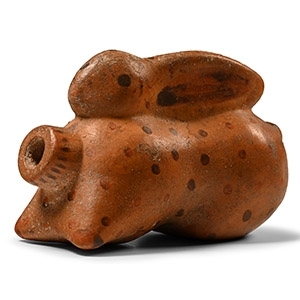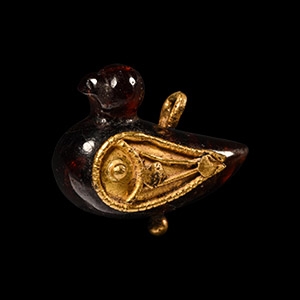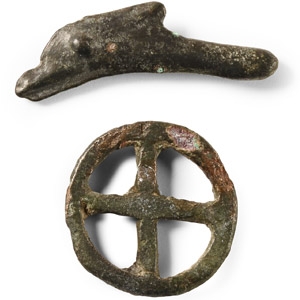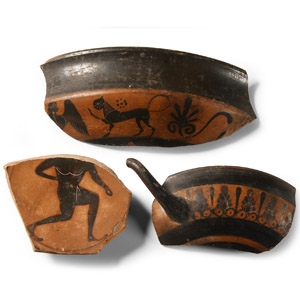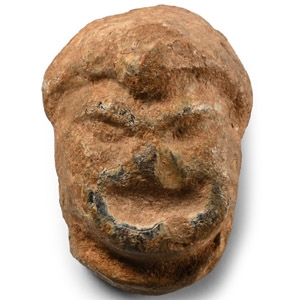Home > Auctions > 4 June - 8 June 2024
Ancient Art, Antiquities, Natural History & Coins
Auction Highlights:
From a collection acquired on the UK art market from various auction houses and collections mostly before 2000.
From an important Cambridgeshire estate; thence by descent.
Cf. Morris, D., The Art of ancient Cyprus, Oxford, 1985, fig.16 p.39, pl.32a, for similar.
Wheelmade red lustrous ware was a ceramic of foreign origin which found its way into Cyprus during the Late Bronze Age, when international trade was widespread. According to Karageorghis it originated in Anatolia during the early Bronze Age but was known in Alasya (Cyprus) during the Late Bronze Age II.
From the private collection of C.H., Niedersachsen, acquired between the 1960s and 1987.
Acquired from Gorny & Mosch, Munich, Germany, 18 December 2018, lot 94 (part).
Property of a South Australian private collector, with collection reference 18.10.
Accompanied by detailed collector's catalogue pages including description and photograph.
Accompanied by a copy of the Gorny & Mosch invoice.
Acquired on the German art market, 1989-1995.
with The Museum Gallery, 19 Bury Place, London, WC1A 2JB, 1998-2003.
Property of a London based academic, 2003-present.
Cf. similar item in Harvard University Art Museums, accession no.2002.283, in Harvard University Art Museums, Annual Report 2002-2003, Cambridge, MA, 2004, p.12.
Mould-made aryballoi (perfume flasks) in the shapes of animals were popular in Greece in the 7th and 6th centuries B.C. Aristocratic men gave real hares as gifts to younger male lovers; this vessel might have performed a similar function.
Ex German art market, 2000s.
Acquired from an EU collector living in London.
From the collection of Surrey, UK, gentleman.
From a collection acquired on the UK art market from various auction houses and collections mostly before 2000.
From an important Cambridgeshire estate; thence by descent.
Cf. similar in the Brooklyn Museum under accession no.00.164.
From a collection acquired on the UK art market from various auction houses and collections mostly before 2000.
From an important Cambridgeshire estate; thence by descent.
See Sear 1684.
The dolphin coins were made in Thrace to honour the god Apollo Delphinios.
From a Northamptonshire collection in early 1990s.
Ex Den of Antiquity, Cambridgeshire, UK.
From an early 20th century collection.
By descent the property of a UK lady.
Ian Wilkinson collection, Nottinghamshire, UK, formed since 1985.
Accompanied by a previous handwritten note including provenance.
Cf. Snyder Schaeffer, J., Ramage, H.N., Greenewalt, C.H. Jr., The Corinthian, Attic and Lakonian Pottery from Sardis, London, 1997, fragments ATT 36 and ATT 73, for similar.
The body of the panther resembles the style of the school of Sophilos, an Attic painter active circa 580-560 B.C. The naked image (a dancing satyr?) recalls the Attic black figure depictions of ithyphallic satyrs, with torso, arms, legs and incision for internal details in white paint, made around 500 B.C.
Ex German art market, 2000s.
Acquired from an EU collector living in London.
From the collection of Surrey, UK, gentleman.
Ex Sotheby's 2003-2005.
From an important Cambridgeshire estate; thence by descent.
Cf. warrior figure group in the British Museum under accession no.1866,0101.298-299.
From a collection acquired on the UK art market from various auction houses and collections mostly before 2000.
From an important Cambridgeshire estate; thence by descent.
Acquired before 1990.
From an old German collection.
421 - 432 of 2809 LOTS

.jpg)

.jpg)
.jpg)
.jpg)


